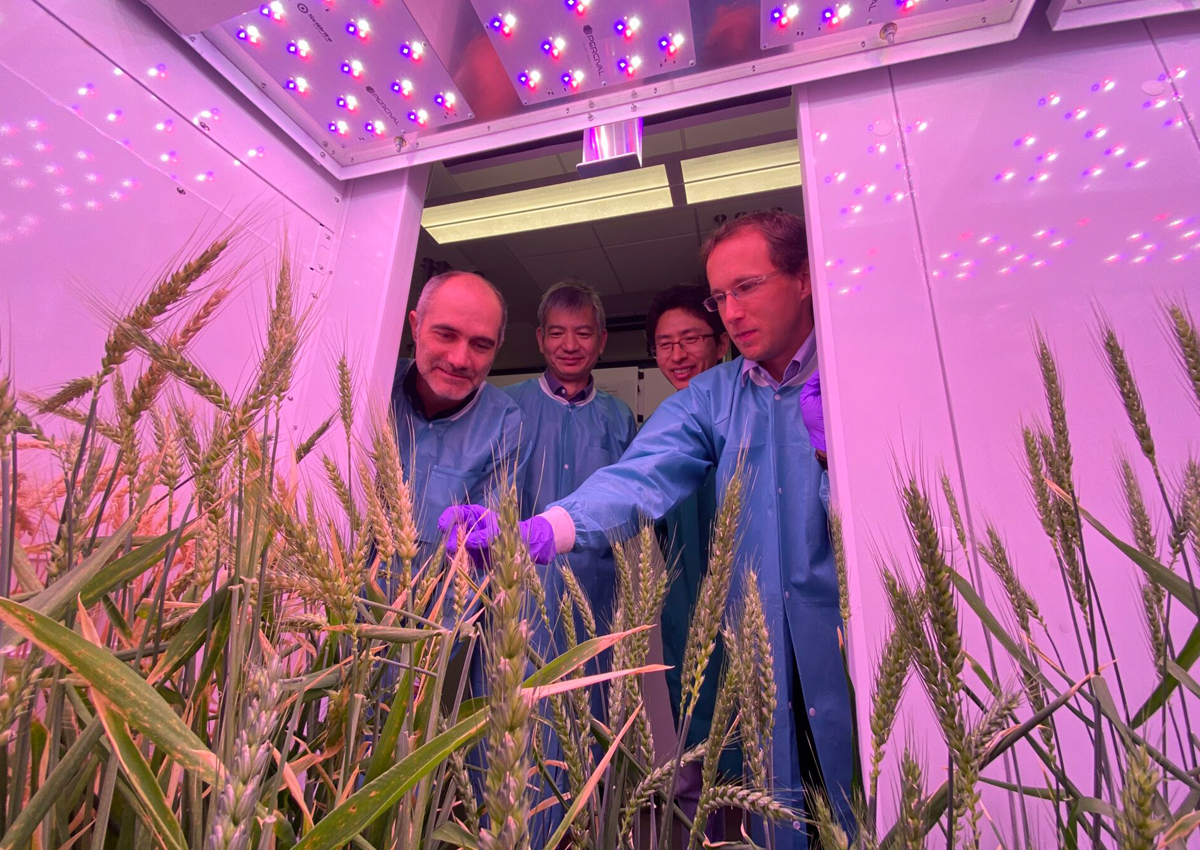
KAUST Researchers Clone Wheat Disease Resistance Genes
May 31, 2023| |
Researchers from the King Abdullah University of Science and Technology (KAUST) have cloned the wheat rust resistance genes Lr9 and Sr43 and identified that they encode unusual kinase fusion proteins, providing new options for addressing disease resistance in bread wheat.
Wild relatives of wheat are a reservoir of genetic diversity for crop improvement. The Lr9 leaf rust resistance gene was originally identified in a wild goatgrass (Aegilops umbellulata) while the stem rust resistance gene Sr43 came from the wild tall wheatgrass (Thinopyrum elongatum). Almost 40 percent of the resistance genes found in bread wheat today were crossed into wheat from wild relatives. Wheat cultivars carrying Lr9 were released in the late 1960s, and Lr9 is still effective in many wheat-growing areas. However, researchers say that this type of breeding can lead to co-introduction of unfavorable versions of other genes from the wild relative, known as “linkage drag.”
KAUST researcher Yajun Wang sequenced the genomes of an Lr9-containing bread wheat cultivar and Ae. umbellulata. The researchers found that Lr9 had been introduced into wheat along with about 536 other genes from Ae. umbellulata. The process also led to the deletion of a small fragment of the wheat genome containing 87 genes.
Two teams led by Simon Krattinger and Brande Wulff cloned Lr9 and Sr43, respectively, by generating mutants to compare their sequence to the parent genomes. According to the researchers, the cloned genes can now be used to engineer bread wheat lines without linkage drag and the genes can be combined with other cloned rust resistance genes into multigene stacks for superior and more durable resistance. Cloning Lr9 and Sr43 also revealed that the genes encode unusual kinase fusion proteins which are prominent new players involved in disease resistance in wheat and barley.
For more details, read the article in KAUST Discovery.
| |
You might also like:
- Gene Discovery Transfers Rust Resistance to Wheat from Wild Relative
- CIMMYT Research Reveals Afghan Wheat's Rust Resistance
- Pocket K No. 60: Rust-resistant Wheat
Biotech Updates is a weekly newsletter of ISAAA, a not-for-profit organization. It is distributed for free to over 22,000 subscribers worldwide to inform them about the key developments in biosciences, especially in biotechnology. Your support will help us in our mission to feed the world with knowledge. You can help by donating as little as $10.
-
See more articles:
-
News from Around the World
- Save the Date: APEC High-Level Policy Dialogue on Agricultural Biotechnology Activities
-
Plant
- Groundbreaking Images of Root Chemicals Reveal New Insights on Plant Growth
- KAUST Researchers Clone Wheat Disease Resistance Genes
- ISAAA Inc. to Hold ASCA6 on September 11-15 in Indonesia
-
Animal
- Roslin Institute and Oxitec Collaborate to Curb Major Cattle Pest
-
Health
- Engineered Yeast to Help Boost Drug Supply
-
Read the latest: - Biotech Updates (December 17, 2025)
- Gene Editing Supplement (December 17, 2025)
- Gene Drive Supplement (February 22, 2023)
-
Subscribe to BU: - Share
- Tweet

